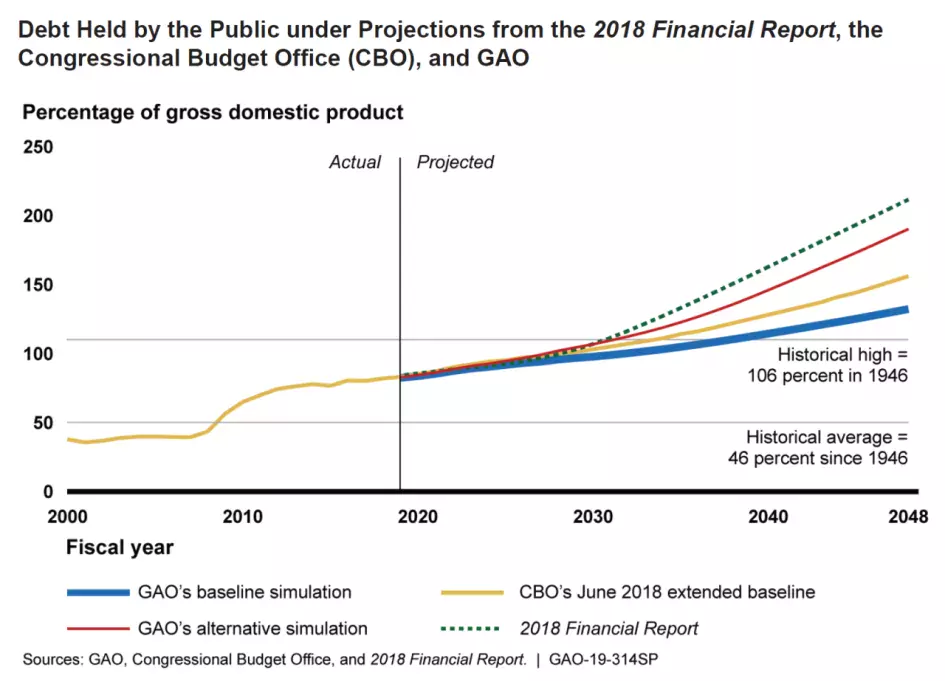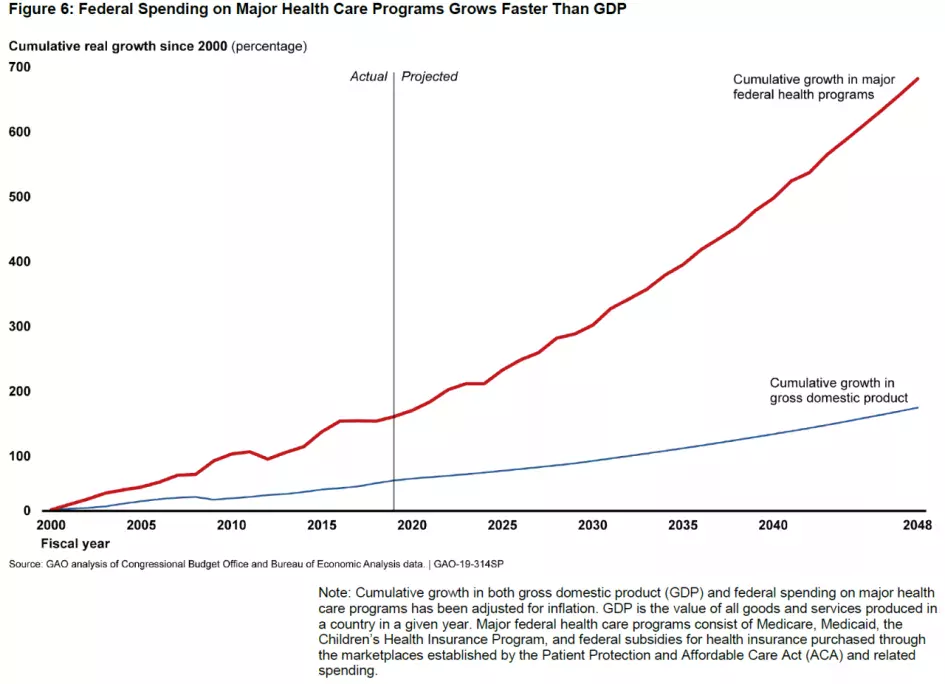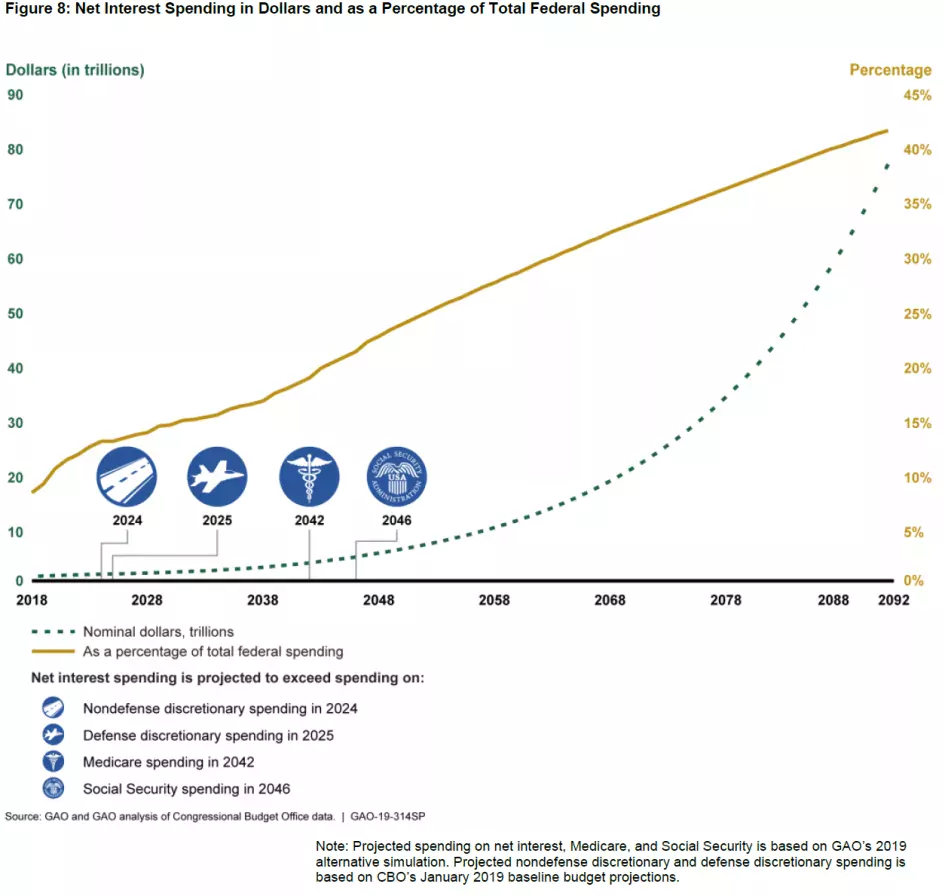The Nation’s Fiscal Health: A Warning about the Government’s Finances
Without a change in law or policy, the gap between the amount of money the federal government collects and the amount it spends will continue to grow, likely reaching $1 trillion in the next few years.
We issued our third annual update on the nation’s fiscal health today, examining both the federal government’s current fiscal condition and its longer-term fiscal outlook.
Listen to our podcast with Susan Irving, GAO’s expert on debt and fiscal issues, and read on for more about our report.
The country’s debt is mounting
Health care costs and interest on debt held by the public (net interest) are the primary drivers on the spending side of the budget, and spending on net interest is on track to exceed defense spending in less than a decade. Laws enacted in FY18 intended to spur economic growth and address national priorities, also increased the projected debt burden in CBO’s, GAO’s, and Treasury’s projections from its 2018 Financial Report.
Debt held by the public—money the government has borrowed by selling Treasury bills, notes, and bonds—was 78% of GDP at the end of FY18. Absent policy changes, that ratio will exceed the historical high of 106% in the next 13-20 years.
Health care is growing faster than the economy
Federal spending for major health care programs, such as Medicare and Medicaid, accounts for over 25% of all health care spending in the United States.
In the long term, federal health care spending is driven by increasing enrollment, particularly in Medicare, stemming primarily from the aging population, and by the increase in health care spending per beneficiary. Historically, federal health care spending has exceeded GDP growth, and it is projected to continue to do so.
Net interest will surpass other federal spending
Under our simulation, absent any policy changes, net interest:
- becomes the largest single claim on the federal budget in the long term;
- will continue to increase due to the growing debt that needs to be financed and rising interest rates; and
- is projected to exceed defense spending in 2025 and Social Security spending in 2046.
Tough choices are ahead
Congress and the administration face serious economic, security, and social challenges that will require difficult policy choices in the near term about economic growth and national needs. These near-term policy decisions should be accompanied by a long-term fiscal plan to put the government on a sustainable path. The longer action is delayed, the greater and more drastic the changes will have to be.
To learn more about America’s fiscal future, watch our video below, and visit our website.
Comments on GAO's Watchblog? Contact blog@gao.gov
GAO Contacts
Related Products

GAO's mission is to provide Congress with fact-based, nonpartisan information that can help improve federal government performance and ensure accountability for the benefit of the American people. GAO launched its WatchBlog in January, 2014, as part of its continuing effort to reach its audiences—Congress and the American people—where they are currently looking for information.
The blog format allows GAO to provide a little more context about its work than it can offer on its other social media platforms. Posts will tie GAO work to current events and the news; show how GAO’s work is affecting agencies or legislation; highlight reports, testimonies, and issue areas where GAO does work; and provide information about GAO itself, among other things.
Please send any feedback on GAO's WatchBlog to blog@gao.gov.









